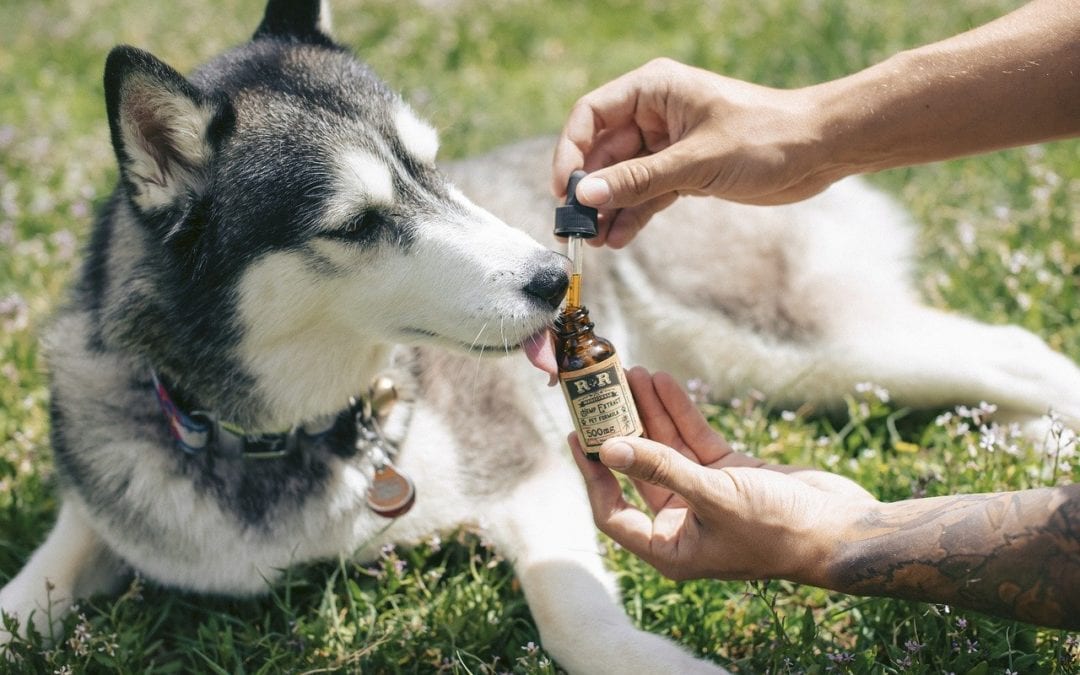The use of medical cannabis has grown dramatically in recent years, amid a storm of amazing therapeutic benfits and controversy. The use of cannabis as a recreational drug has unfortunately overshadowed many of the potential health benefits of the hemp plant in both humans and pets. The recent Farm Bill passed by congress legalized hemp, separating it from cannabis plants with a higher THC content. This opened the door for more open conversation in the veterinary community.
It is the THC (tetrahydrocannabinol) component of the cannabis plant that provides the psychoactive effects. This is the part that creates the ‘high’ or getting ‘stoned’. There are many other components in the plant, that, when taken together in a whole plant product, can provide amazing health advantages. Due to the lucrative recreational drug business, many plants have been bred specifically for higher THC content. While THC does have some medicinal benefits on its own, the biggest benefit has been shown by using the whole plant, and even plants with very low THC can provide beneficial effects. CBD (cannabidiol) is another component of the plant that can provide amazing benefits. For more details about the components of hemp, please visit: https://suziespettreats.com/
When the entire hemp plant is used, there are many other components besides just the CBD that together can work magic in treating certain medical conditions. All mammals have an endocannabinoid system already present, with receptors ready to receive the components of the hemp plant. To me, this indicates that supplementing with cannabis is very natural for the body. It may be the case, in fact, that some symptoms are caused by a lack of cannabinoids in the diet.
We are just starting to scratch the surface in learning about the potential benefits of this amazing plant. Among the conditions we have treated with success to date are seizures, anxiety, cancer, intestinal distress, pain, arthritis and other inflammatory diseases. The truth is that this plant is so safe to use that it is reasonable to try it in a variety of conditions to see if there is a beneficial effect. There is literally no toxic dose.
There are, however, some very important considerations when choosing a CBD product. They are not all created equal, and to a large extent, you do get what you pay for. Diligence in raising the plants and proper extraction techniques will have a huge impact on the efficacy of the final product. Plants should be raised without chemicals in clean soils and processed without adding other chemicals into the end product. Because there is no regulation requiring purity in the processing, it is important to use a product from a reputable company that is both knowledgeable and transparent. I have recently partnered with Suzie’s CBD in promoting the benefits of CBD in treating pets. You can visit their website here: https://suziespettreats.com/
There are other reputable companies, especially here in Colorado, you just need to ask the right questions.
Dosing CBD is also very important and will vary considerably from pet to pet. I recommend starting with a low dose and working up to get optimal results. While there are no dangerous side effects, pets may sometimes become a bit lethargic, in which case, the dose should be decreased. Starting with 1mg per 10lb of body weight is a good guideline, but always monitor your pet’s response in order to customize the dose appropriately. The most economical way to buy CBD is in the most concentrated form. This will cost more up front, but you will use much less so it saves money in the long run, especially if you are treating a larger pet.
While I fully endorse the benefits of CBD in many conditions in pets, it is not a magic bullet. It is important to include proper nutrition and detoxification when treating any health condition. This approach will improve the results of treatment dramatically. There is no need to fear using CBD in your pet as an adjunctive therapy, but it is important to be educated on the product you are using.


